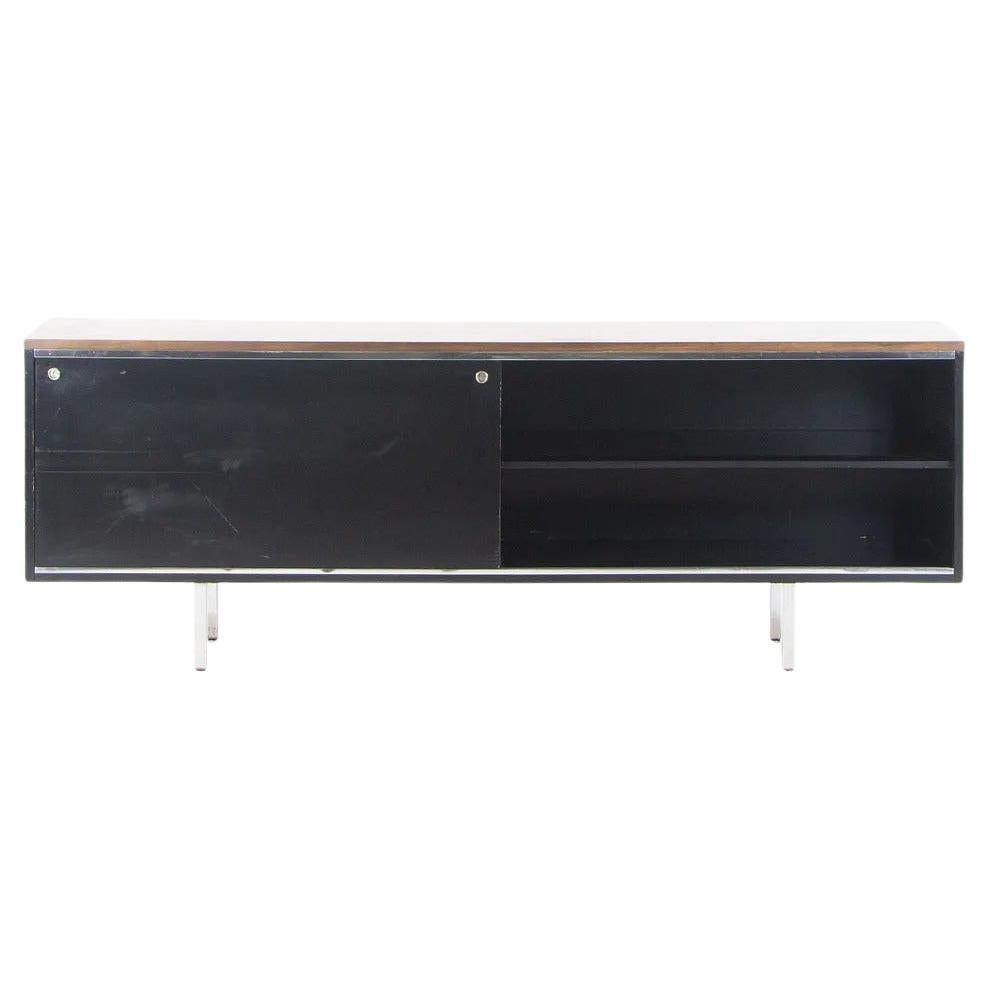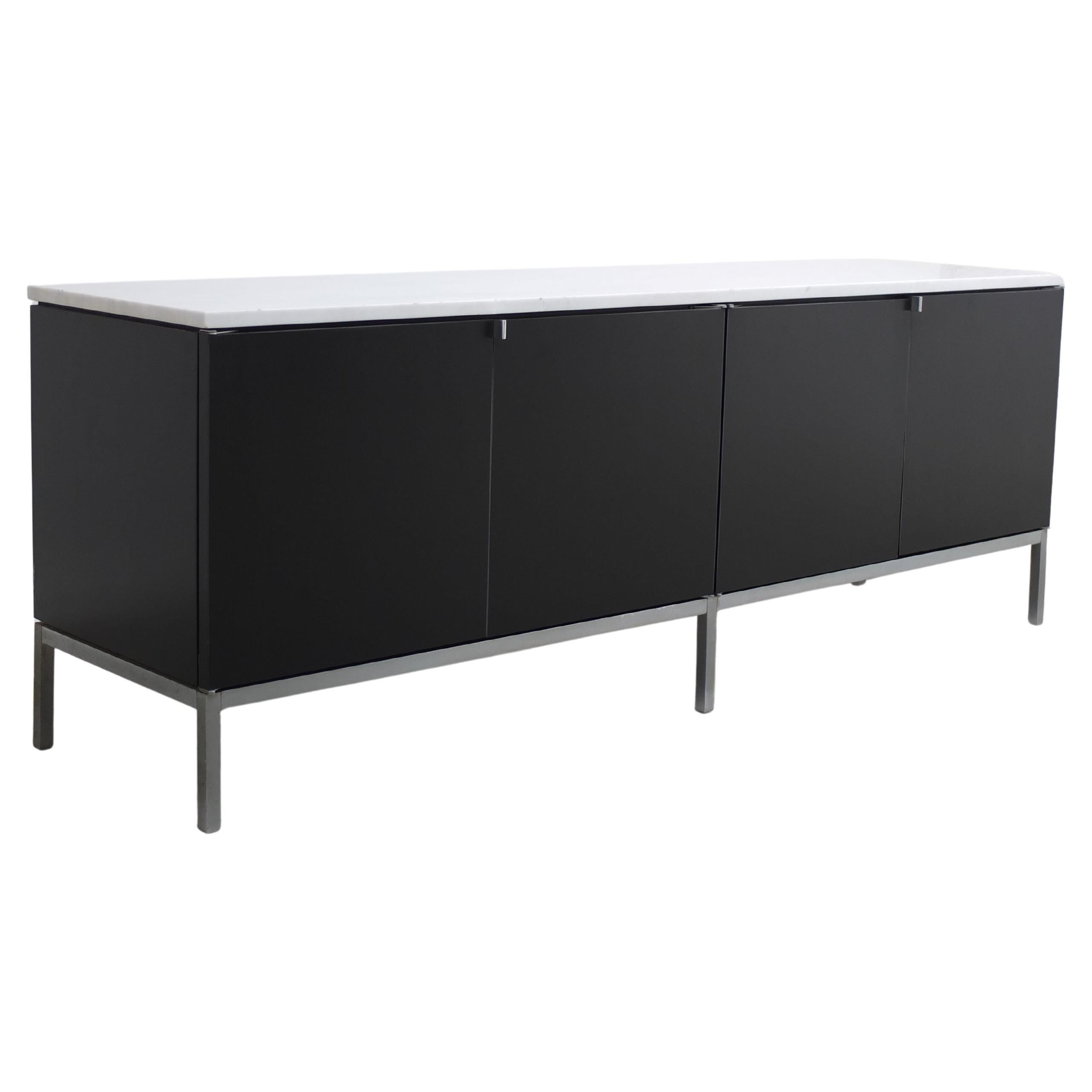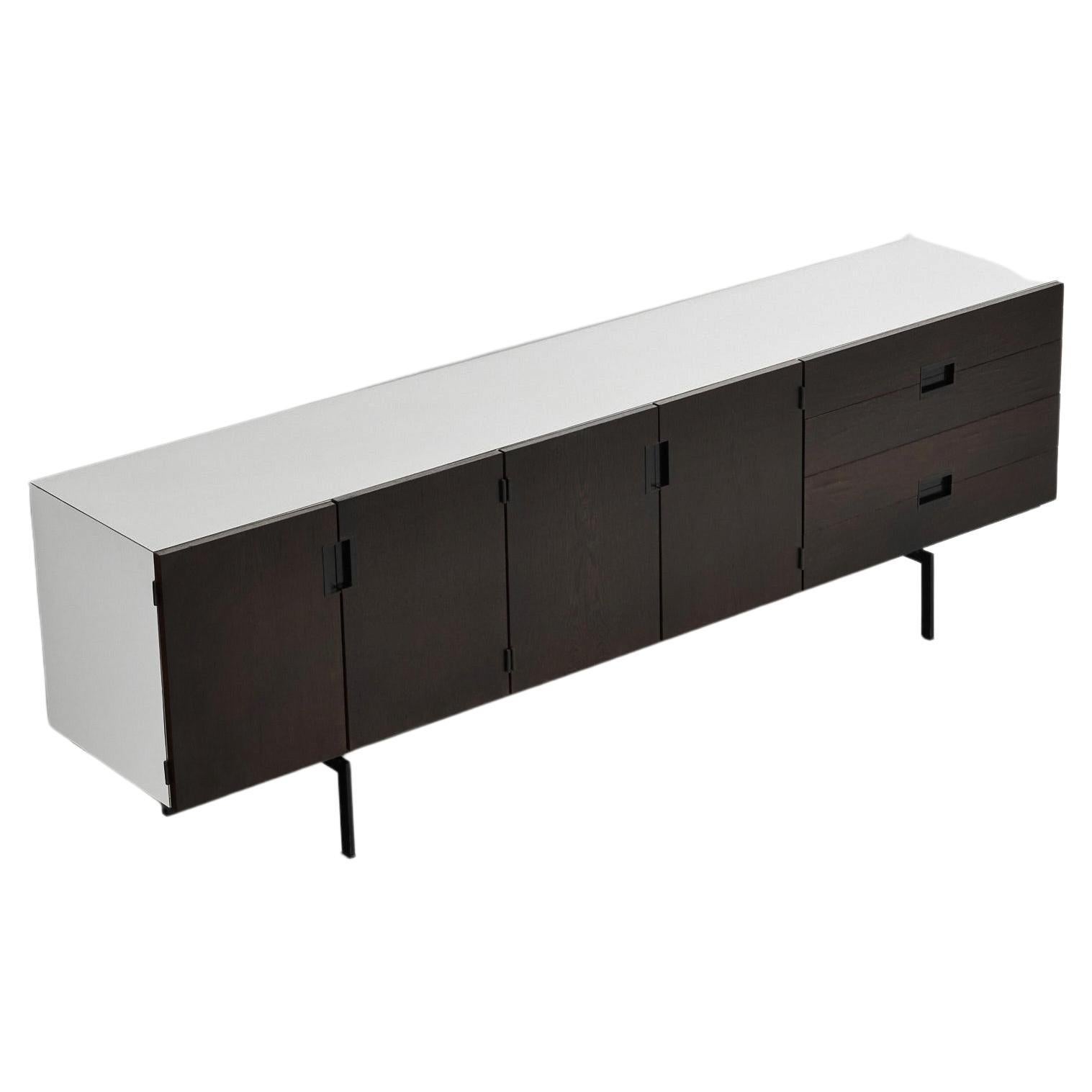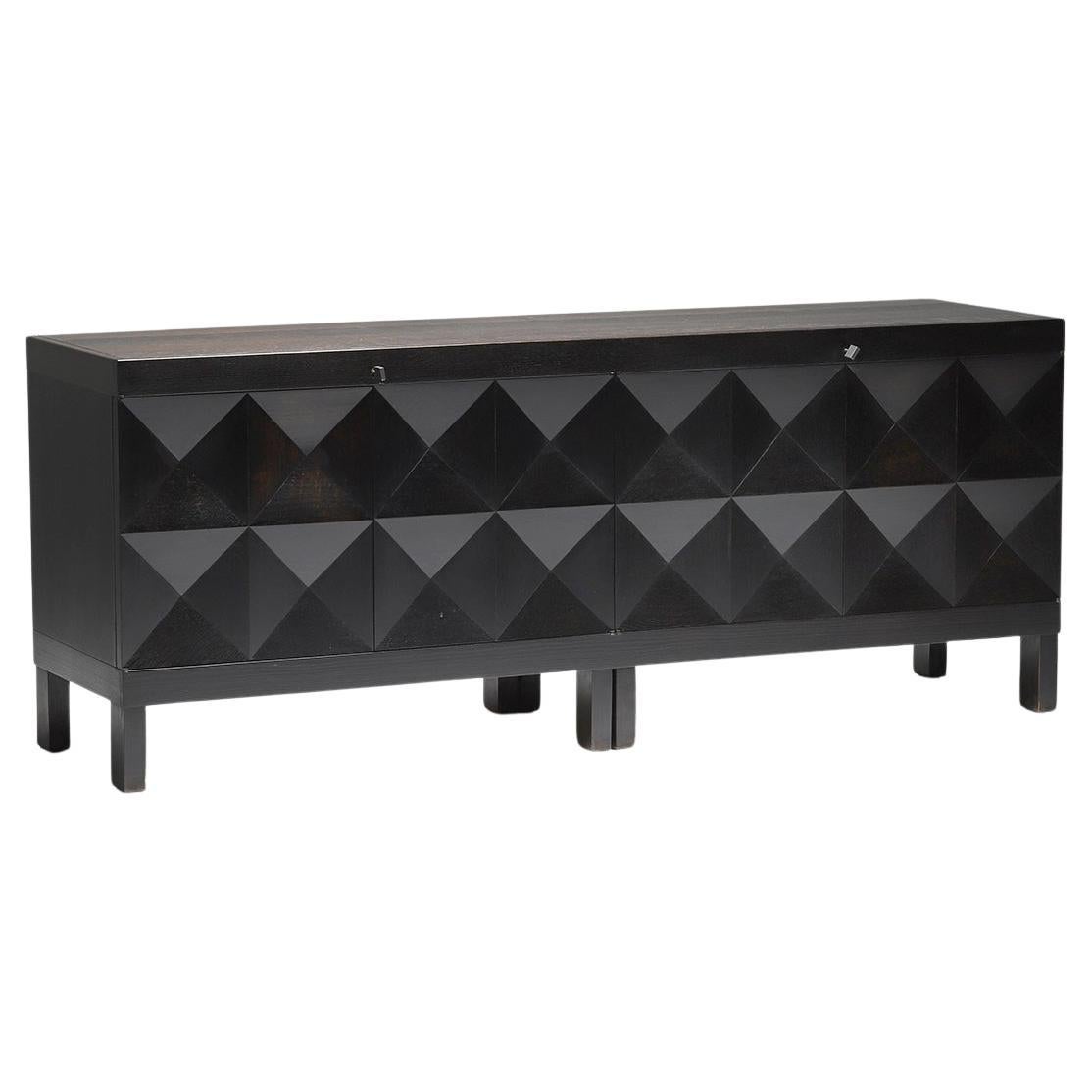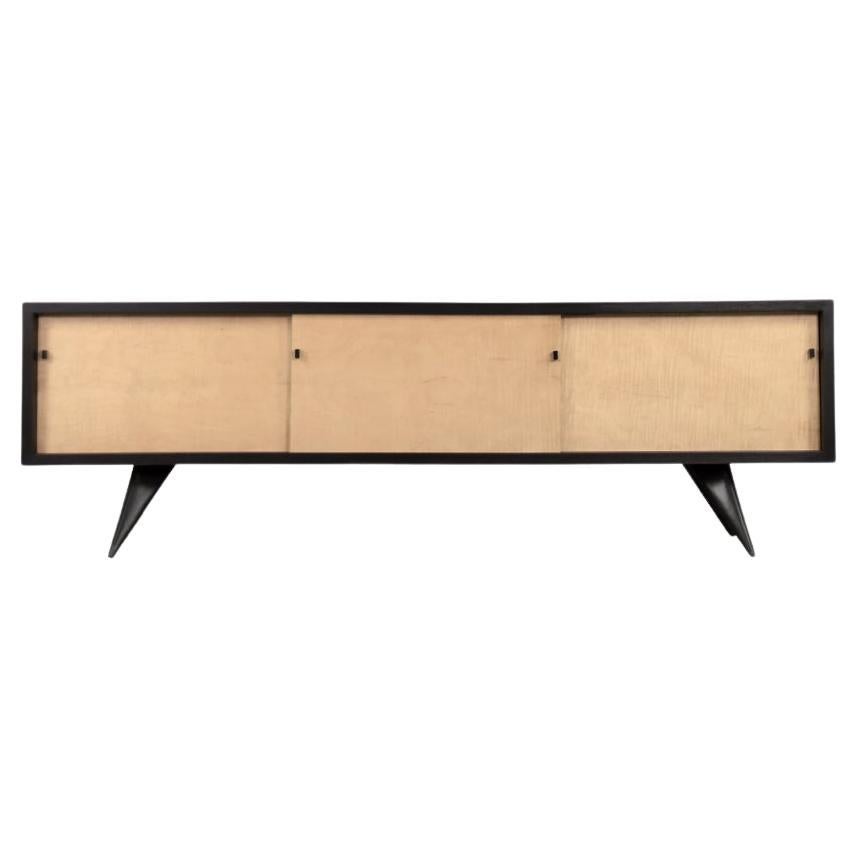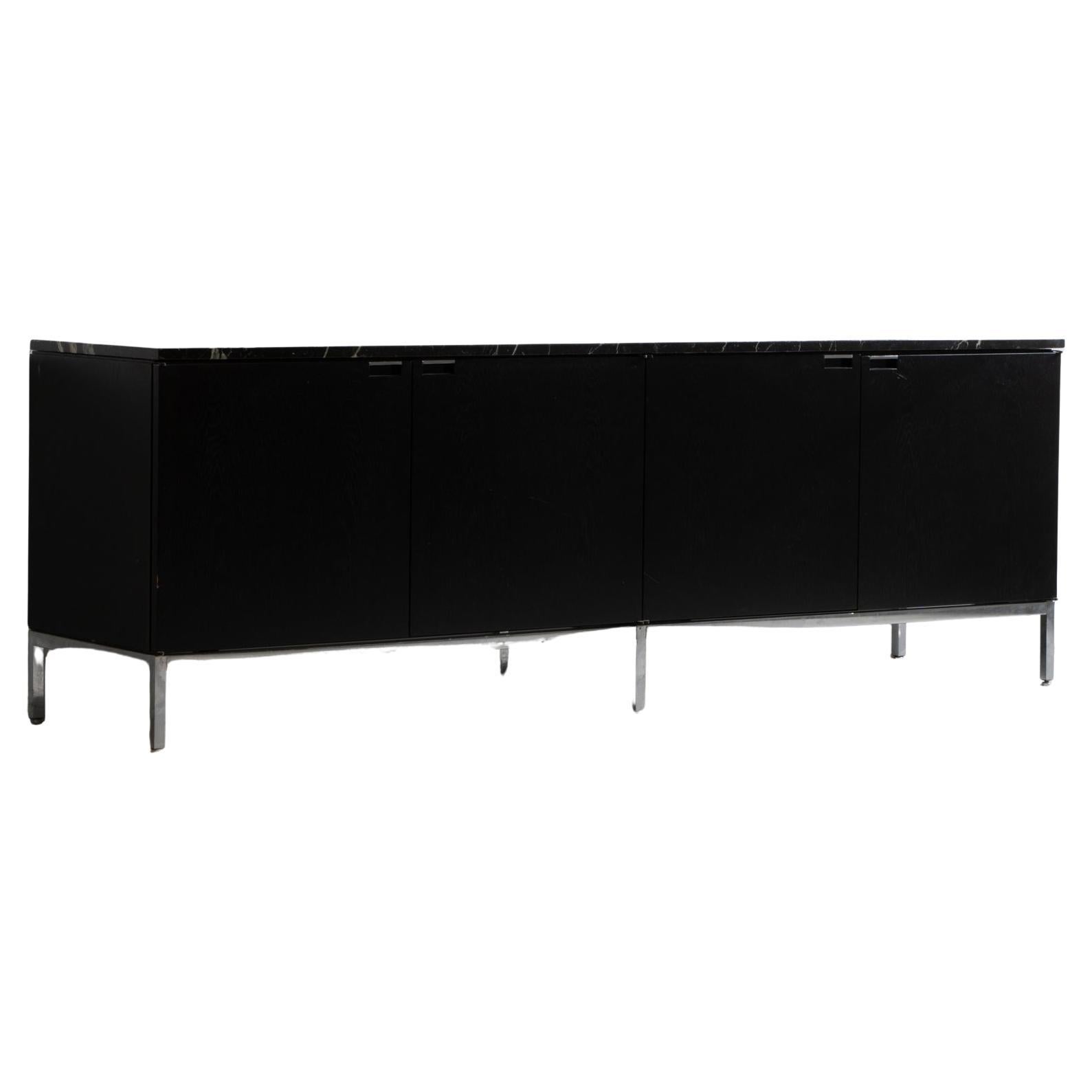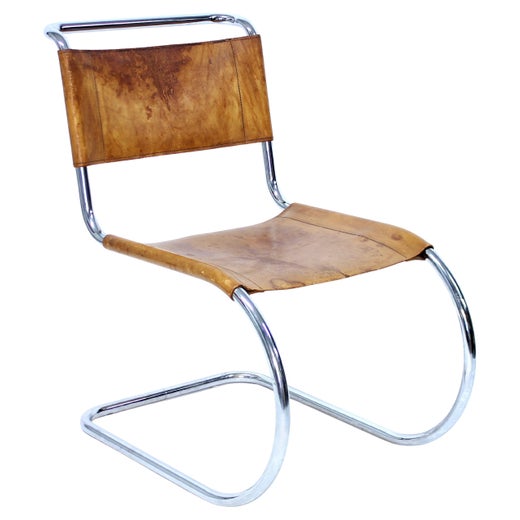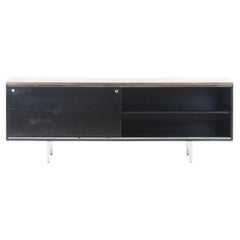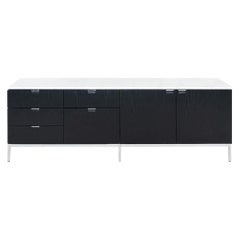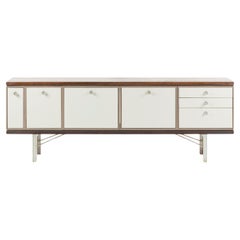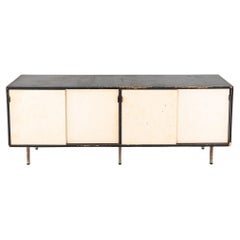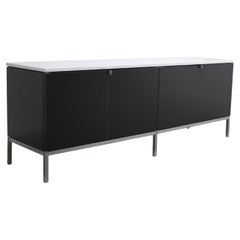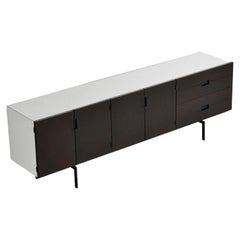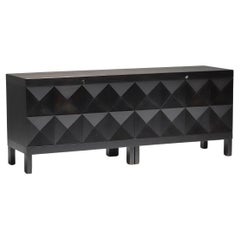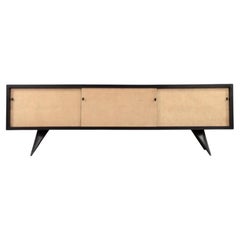1958 Jens Risom Ebonized Oak Wood Credenza / Cabinet from Seagram Building
About the Item
- Creator:Jens Risom (Manufacturer),Ludwig Mies van der Rohe (Designer)
- Dimensions:Height: 32.5 in (82.55 cm)Width: 18.5 in (46.99 cm)Depth: 72.25 in (183.52 cm)
- Style:Modern (In the Style Of)
- Materials and Techniques:
- Place of Origin:
- Period:
- Date of Manufacture:1958
- Condition:Wear consistent with age and use.
- Seller Location:Philadelphia, PA
- Reference Number:Seller: 240712051stDibs: LU8164241999022
Ludwig Mies van der Rohe
Architect, furniture designer and educator, Ludwig Mies van der Rohe was a central figure in the advancement and promotion of modernist design and architectural theory and practice. Like Frank Lloyd Wright and Le Corbusier, he was a hugely influential presence in the field, who shaped the course of 20th-century architecture both through his buildings and his teaching of rationalist design principles.
Born in the medieval German city of Aachen, Mies found an interest in architecture as a boy while working for his father, a master stonemason. He had no formal education as an architect, but learned his skills as an apprentice to the designer Bruno Paul, and as a staffer in the office the proto-modernist architect and designer Peter Behrens. Following World War I, Mies rose to prominence in his field amid the liberal atmosphere of the Weimar Republic. His reputation was secured by his work on the German Pavilion at the 1929 International Exposition in Barcelona (commonly referred to as the Barcelona Pavilion) — which Mies codesigned with Lilly Reich, his creative and romantic partner — a radically simple, poetic, open-plan building pared down to its architectural essentials. Mies would go on to direct the Bauhaus from 1930 until 1933, when Nazi-government interference forced the closure of the progressive art and design school. Later that decade, he made his way to Chicago, where he remained for the rest of his career as a practicing architect and a dean of the Illinois Institute of Technology.
Mies’s famed dictum “less is more” grew from his belief that architecture both guides and expresses the spirit of the times, and he envisioned the 20th century as open-minded, logical, transparent and liberated by technology. His best-known buildings — residences such as the Villa Tugendhat in Czechoslovakia and the Farnsworth House in rural Illinois; skyscrapers like the 860–880 Lake Shore Drive apartment towers in Chicago and the Seagram Building in New York — reflect that philosophy. As do the most famous furniture designs authored by him or codesigned with Reich.
Pieces designed by Mies and Reich such as the Barcelona chair (the authorized version is produced by Knoll today), stools and daybed, or the cantilevered Brno chairs, deliver a maximum of comfort and support from a minimum of materials: their “lavishness” derives from the precision with which they are engineered and constructed. For the collector, the allure of Mies’s furniture is at once practical and idealistic. Useful and functional, his works embody the highest aspirations of modernism.
Find vintage Mies van der Rohe chairs, tables and other furniture on 1stDibs.
Jens Risom
The Danish-born Jens Risom brought the Scandinavian modern design sensibility to a wide audience in the United States. As the first designer for Knoll Inc., Risom introduced American buyers to the region’s enduring design values of simplicity, grace and craftsmanship.
Risom trained in furniture making at the Copenhagen School of Industrial Arts and Design under Ole Wanscher, alongside classmates Hans Wegner and Børge Mogensen. In 1939, a year after graduating from business school, Risom decided to move to the U.S.
While working for an interior designer in New York in 1941, he met Hans Knoll, and the businessman and the designer hit it off. They brought out their first line the next year, despite wartime materials restrictions. The signature piece — now a design icon — was a lounge chair with a striking, undulant birch frame and a seat made of webbed sub-military grade parachute straps. Risom was drafted into the army, and served as a translator under General George Patton. When he returned from the war, Risom clashed over furniture design ideals with his business partner’s new bride, Florence Knoll, the pioneering mid-century modernist who was schooled in the Bauhaus method, which favored furniture with strict, geometric metal frames. Risom then started his own company, Jens Risom Design.
In the course of his long career, Risom developed a stylistic vocabulary that was a reflection of the life of the man himself: his furniture has Danish warmth coupled with an American air of crisp efficiency. Vintage Risom chairs are almost instantly recognizable — the arms and seat backs are set at a distinctive angle that seems to invite people to sit back and relax, yet they know they can hop up in an instant, ready to go.
As you will see on these pages, Jens Risom is one of the great men of American modern design who made furniture that is unique and timeless.
Find a collection of vintage Jens Risom furniture on 1stDibs that includes lounge chairs, desks, coffee tables and more.
- ShippingRetrieving quote...Shipping from: Lebanon, PA
- Return Policy
More From This Seller
View AllVintage 1960s American Modern Cabinets
Wood, Walnut
2010s American Modern Credenzas
Marble, Steel
Vintage 1960s American Modern Credenzas
Aluminum, Steel
Vintage 1950s American Modern Credenzas
Steel
Vintage 1950s American Modern Credenzas
Aluminum
21st Century and Contemporary Danish Modern Credenzas
Steel
You May Also Like
Mid-20th Century American Mid-Century Modern Sideboards
Steel
Vintage 1950s Dutch Mid-Century Modern Sideboards
Metal
Vintage 1960s Belgian Mid-Century Modern Sideboards
Wood
Vintage 1960s Scandinavian Mid-Century Modern Sideboards
Wood, Maple
20th Century Italian Mid-Century Modern Sideboards
Marble
Vintage 1960s Scandinavian Brutalist Sideboards
Metal
